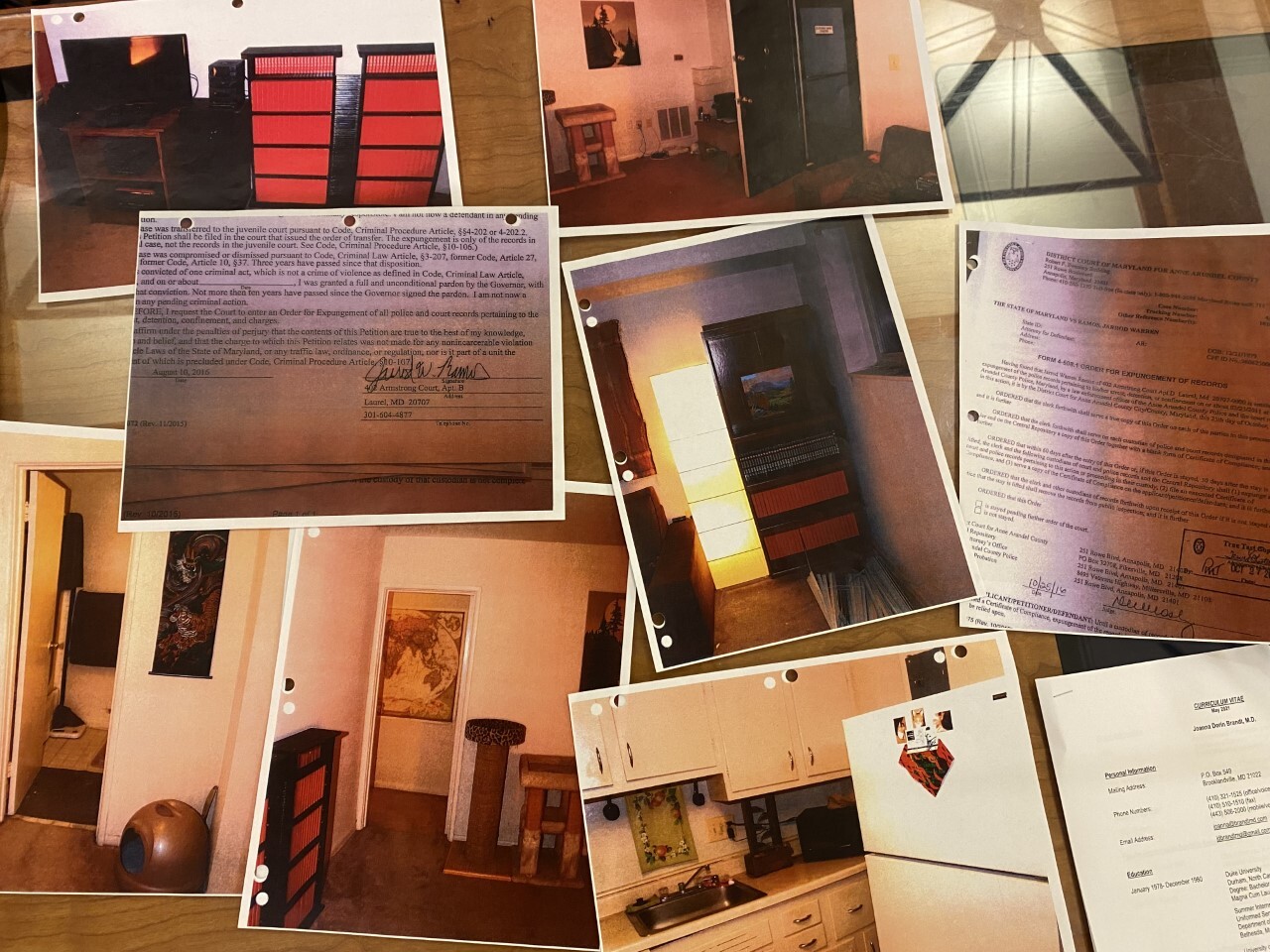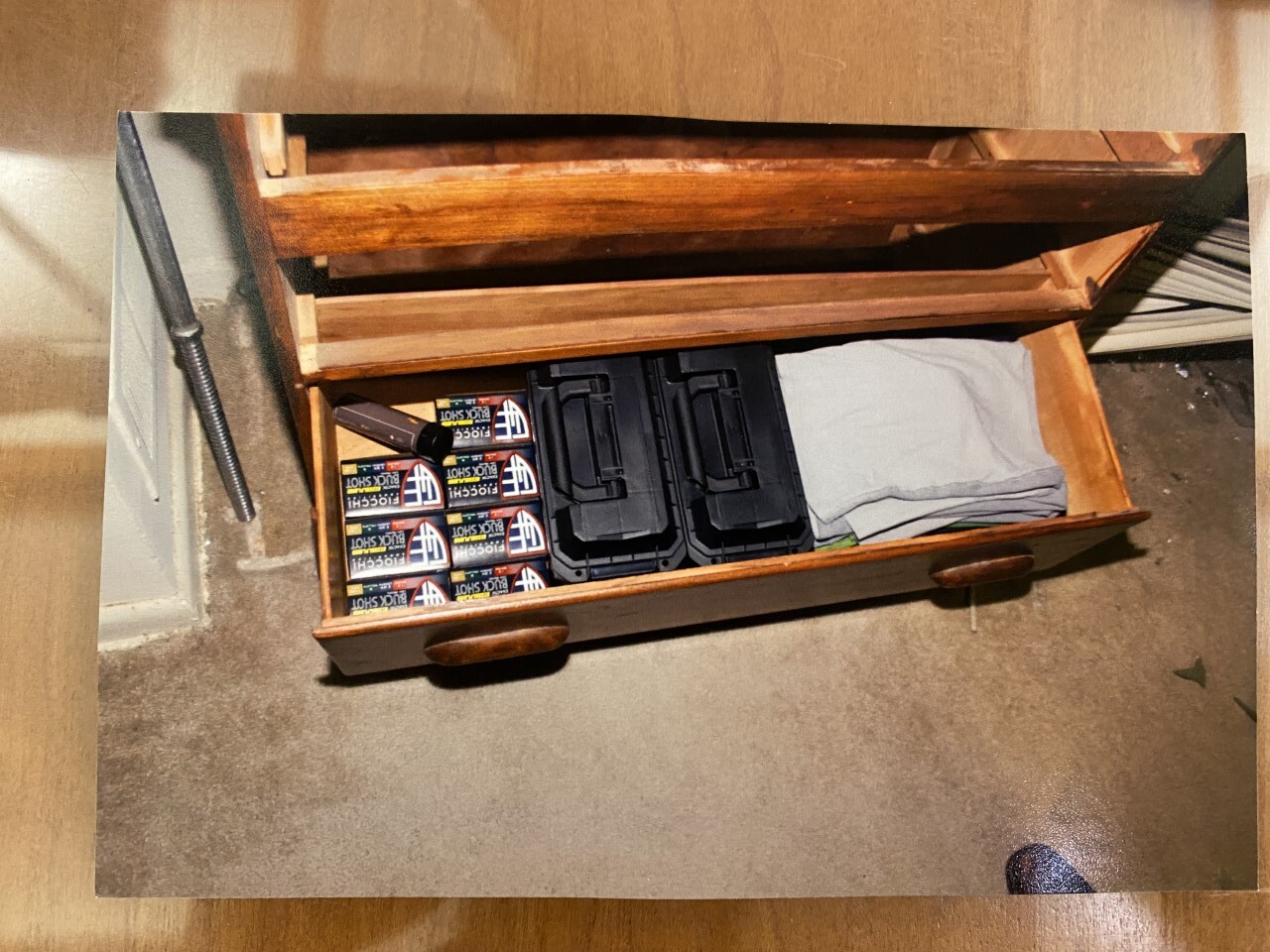ANNAPOLIS, Md. — Day two of the trial for the Capital Gazette shooter focused on the gunman's arrest and the hours after the shooting: his interrogation and the search of his apartment.
Prosecutors started by questioning the defense's witness from day one, one of the first responding officers who ultimately apprehended the gunman, 41-year-old Jarrod Ramos.
His body worn camera footage was shown, showing officers searching for victims and survivors. Officers can be heard leading survivors out of the office saying, "Don't look down. Look at me."
One survivor tells police what happened. “He shot through that door,” he said, unknowingly walking by the suspect who is hiding under a desk.
Moments later, Anne Arundel County police officer Wesley Callow discovers the gunman hiding out under the desk.
The shooter is heard saying "I surrender." He's handcuffed and interviewed, while sitting calmly as police search the rest of the office for anymore suspects or casualties.
RELATED: Inside the court room: Day one of the Capital Gazette shooting trial
Prosecutors questioned Callow about the suspect's state when he was found.
Callow said the gunman did everything he was asked.
State's Attorney Anne Colt Leitess: "He was calm, wasn't he?"
Callow: "Very.”
Defense then called on Detective Williams, with the Anne Arundel County Police Department digital forensics lab. He went over his examination of a computer from the Capital Gazette office that was used for Twitter just after the shooting.
Then, Anne Arundel County PD crime scene technician Katie Ladue was called to the stand. She conducted two search warrants, one on his rental car and one on his apartment hours after the shooting.
Once SWAT team members cleared the apartment, they went in, photographing and collecting evidence. Ladue found a district court petition for expungement of records paperwork from 2011.

She also found 2 books: The Last Duel (in a trial by combat, a knight defends his wife's honor against the squire she accuses of rape) & Reputation and Defamation (which suggests different criteria for when courts determine whether an attack on reputation was defamation).

She also found a damaged hard drive, shotgun stock, firearm accessories and cleaning supplies, goggles and ear protection packaging, empty ammo boxes, rubber grenade caps and 12 gauge dummy rounds in a trash can, as well as live ammo and a live smoke grenade in his dresser.
She also recovered the packaging of flame thrower shotgun shells, which showers the target in a wall of flame, and three door stops.
Next was Anne Arundel County PD detective Kelly Harding, who responded to the scene and interviewed the gunman and witnesses.
Hardings’ questioning from defense counsel focused on her interview of the suspect. They played snippets of the eight-hour long interrogation.
From the time of his arrest in the office building, to his initial interview in police custody, he would not give up his name. He only asked for water and said multiple times: You don’t know my name?
After they took his clothes into evidence, Harding said: Tell me what you want.
He replied : Just water.
He told Harding to ask the Capital Gazette editor, Rick Hutzell who he was. He assumed Hutzell would know because Ramos had a long-standing beef with the paper over his failed defamation lawsuit from 2011.
"As far as I know, he is still alive," said Ramos.
Harding sent a picture to officers on scene to get Hutzell to ID him.
Three and a half hours after the shooting, she identified him through another means. Harding later told Ramos during the interrogation that Hutzell didn’t know his name and didn’t know why he opened fire on staffers.
He stayed calm and cooperative but did not offer much information.
Harding explained she learned about the defamation suit and other information from his sister.
She tried to empathize with him, saying that things get misreported all the time, in order to get him to start talking.
“I do know what it’s like to be mistreated by the media," said Harding.
She cited that at this time during the interrogation, there were false reports circulating that he had altered his fingerprints. He laughed and made a joke.
But nothing worked. He didn’t offer any information about the lawsuit or why he did what he did.
“At the end of the day, our job is done. Who killed all these people today," said Harding. “There’s no mystery here. The only that’s missing is your opportunity. If you choose not to take your opportunity, that’s on you. People are going to fill in the blanks ... You’re only hurting you.”
The prosecution’s line of questioning has to do with his behavior, asking if he did anything unusual, if it seemed like he was responding to voices in his head.
Harding said no.
“He was rigid and I actually found his speech quite articulated,” said Harding.
The prosecutor continued to point out that he followed all directions in the taking of his photo, prints and other evidence.
At times, he was not restrained at all.
“He posed for me,” Harding said when asked what Ramos did when she went to take a picture of him.
At 6:30 p.m., he asked for food. Harding asked if he had any allergies and he said he was allergic to peanuts and milk, but he can tolerate small doses.
“What’s your plan in jail? You know they don’t pay attention to food allergies in jail,” said Harding, before she went to get him a Wendy’s cheeseburger.
The last witness of the day was Dr. Joanna Brandt, a physician specializing in general and forensic psychiatry, who is an expert witness for the defense and will explain mental health disorders to the jury. She did not evaluate Ramos. She has been an expert witness over 100 times.
She said you diagnose someone by examining the patient through observation and questioning; looking at their hygiene, movements, eye contact, speech volume and speed and mood.
After a handful of objections from prosecutors, the jury and Dr. Brandt were asked to leave the courtroom. Then prosecutors asked for her testimony to be stricken because it appeared she was reading from a script and knew what defense was going to ask.
Judge Michael Wachs said he noticed the defense attorney and Dr. Brandt were flipping pages at the same time.
“I never provided her with a script. I have provided her with a copy of my direct examination” said defense attorney Matthew Connell.
He said they collaborated for months but he did not provide her with the answers, just the questions.
Judge Wachs ruled that Dr. Brandt can stand as a witness. She came back into the courtroom for questioning, explaining how she evaluates a patient for criminal responsibility.
She said there has to be a mental disorder that was in play at the time of the event and the mental disorder must be severe enough that their impairment is substantial, weighing the symptoms.
Prosecutors plan to cross examine Dr. Brandt about the “script” Thursday.
ABOUT THE JURY:
It is made up of eight men and four women. Many, or immediate family members, have a mental health/law enforcement/legal background.
ABOUT THE TRIAL:
The trial is expected to last 10 business days. Judge Michael Wachs said the bulk of the trial will be testimony from doctors and mental health professionals.
The jury has to make a decision based on a preponderance of the evidence, the lowest standard of proof. Defense attorney O’Donnell said it means more likely so than not.
Because the defendant has not been vaccinated, he has to wear a mask. Defense asked that he be able to wear a clear mask so potential jurors could see his face, but it was fogging up his glasses so he chose to wear a black cloth mask so much of his face could not be seen.
He is also allowed to wear civilian clothing but chose not to.




